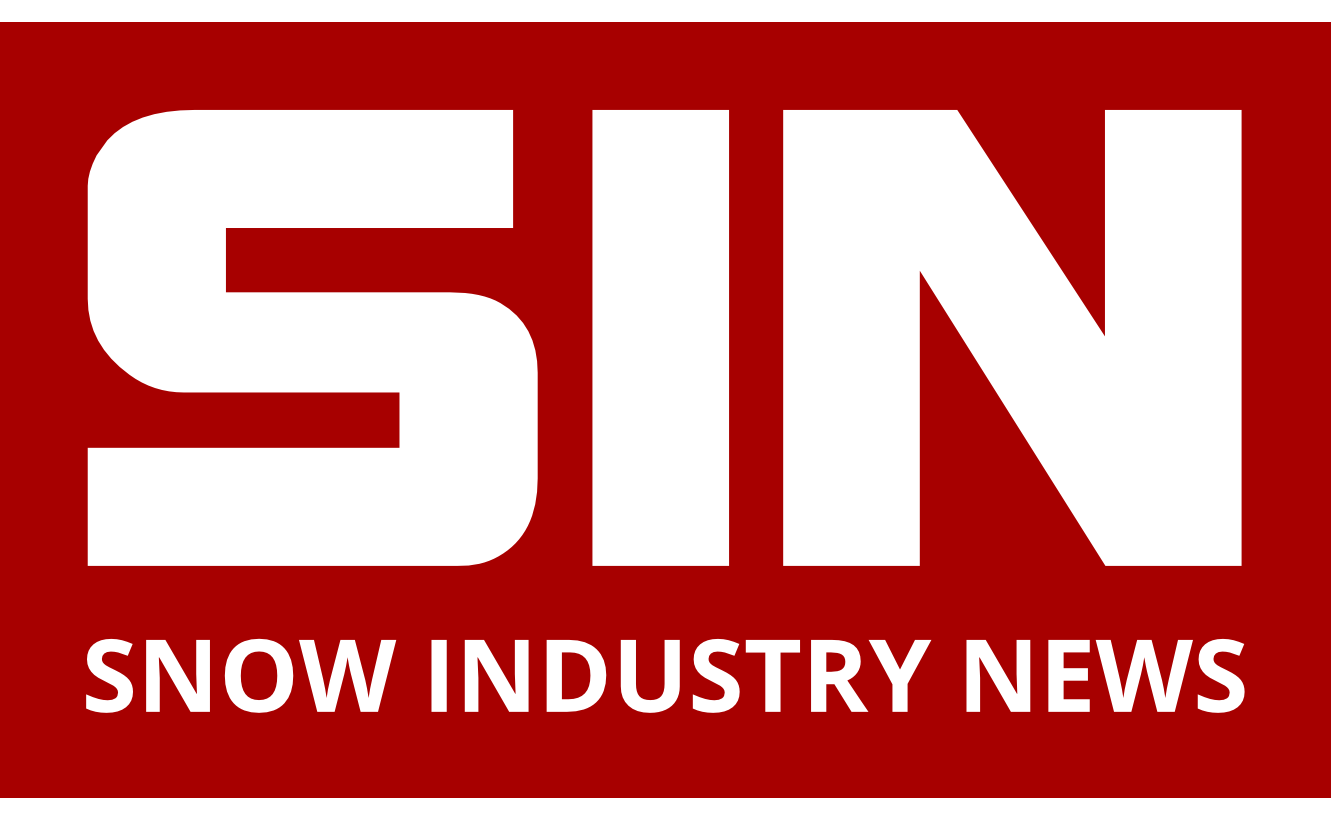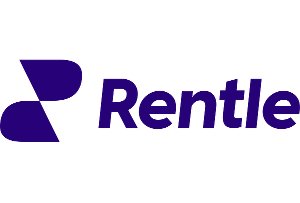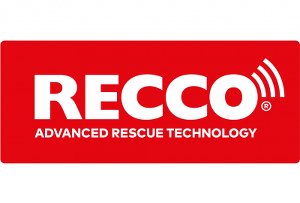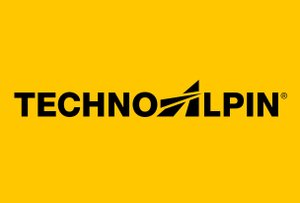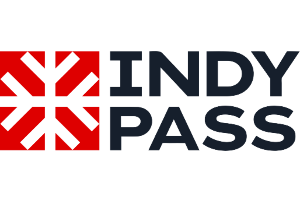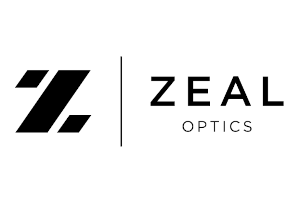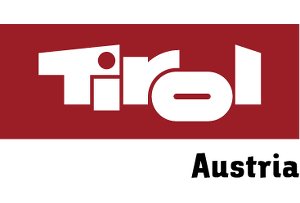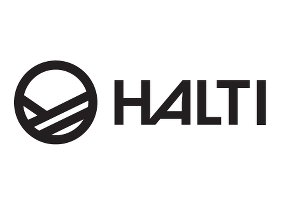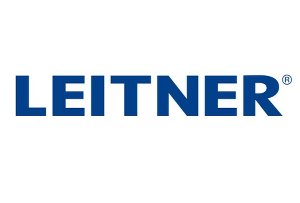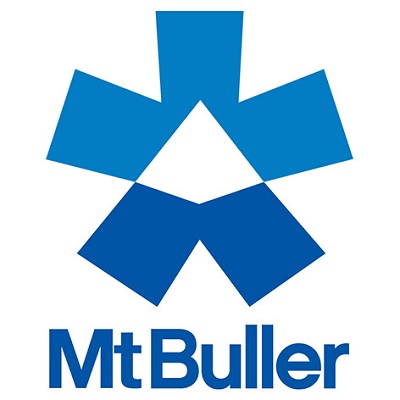Vail Resorts Reports Fiscal 2025 Fourth Quarter & Full Year Results and Provides Fiscal 2026 Outlook
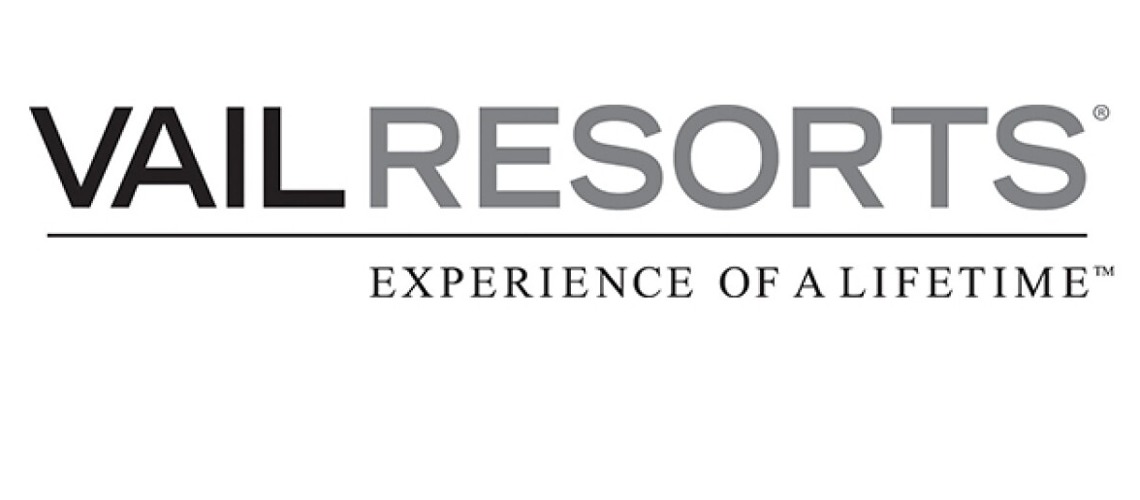
Vail Resorts, Inc. (NYSE: MTN) today reported results for the fourth quarter and fiscal year ended July 31, 2025 and reported season-to-date pass product sales through September 19, 2025. Vail Resorts also provided its outlook for the fiscal year ending July 31, 2026, declared a dividend payable in October 2025, and announced the share repurchases completed during the quarter.
Highlights
- Net income attributable to Vail Resorts, Inc. was $280.0 million for fiscal 2025 compared to net income attributable to Vail Resorts, Inc. of $231.1 million for fiscal 2024.
- Resort Reported EBITDA was $844.1 million for fiscal 2025, which included $15.2 million of one-time costs related to the previously announced two-year resource efficiency transformation plan, $8.1 million of one-time costs related to the Company's previously announced Chief Executive Officer ("CEO") transition, and $1.2 million of acquisition and integration related expenses. Resort Reported EBITDA was $825.1 million for fiscal 2024.
- Pass product sales through September 19, 2025 for the upcoming 2025/2026 North American ski season decreased approximately 3% in units and increased approximately 1% in sales dollars as compared to the prior year period through September 20, 2024. Pass product sales are adjusted to eliminate the impact of changes in foreign currency exchange rates by applying current U.S. dollar exchange rates to both current period and prior period sales for Whistler Blackcomb.
- The Company provided its outlook for fiscal 2026 and expects net income attributable to Vail Resorts, Inc. to be between $201 million and $276 million and Resort Reported EBITDA to be between $842 million and $898 million, which includes an estimated $14 million of one-time costs in support of the Company's resource efficiency transformation plan.
- The Company's Board of Directors declared a quarterly cash dividend of $2.22 per share of Vail Resorts' common stock that will be payable on October 27, 2025 to shareholders of record as of October 9, 2025. In addition, the Company repurchased approximately 1.29 million shares during the quarter at an average price of approximately $156 per share for a total of $200 million. For the full fiscal year, the Company repurchased approximately 1.69 million shares, or 4.5% of shares outstanding as of the beginning of fiscal 2025, at an average price of approximately $163 per share for a total of $270 million.
- On July 2, 2025, the Company completed an offering of $500 million aggregate principal amount of 5.625% Senior Notes due 2030. The Company used a portion of the proceeds from the offering to repay borrowings under its revolving credit facility incurred to fund the repurchase of $200 million of its outstanding shares of common stock completed in June 2025 and to fund off-season liquidity. The Company intends to use the remaining proceeds, together with its available liquidity, including the U.S. delayed draw term loan availability for the repurchase or repayment of a portion of its outstanding 0.00% Convertible Senior Notes due 2026 at or prior to their maturity on January 1, 2026.
Commenting on the Company's fiscal 2025 results, Rob Katz, Chief Executive Officer, said, "The Company achieved 2% growth in Resort Reported EBITDA despite total skier visits declining 3% across our North American destination mountain resorts and regional ski areas versus the prior year. Visitation reflects the benefit of improved conditions in the second quarter relative to the prior year, offset by the expected decline in visitation from selling fewer pass units for the 2024/2025 North American ski season. For the full year, Resort net revenue increased 3% driven by a 4% increase in season pass revenue and increased ancillary spend per guest across our ski school and dining businesses. Resort Reported EBITDA for fiscal 2025 also reflects strong cost discipline, including $37 million of savings from the resource efficiency transformation plan before one-time costs. The Company's full year Resort Reported EBITDA growth is partially offset by $14 million of increased costs from company-wide performance-based management incentive plan expense that was not earned in the prior year, $15 million of one-time costs related to the two-year resource efficiency transformation plan, $8 million of one-time costs related to the Company's previously announced CEO transition, and $5 million unfavorable EBITDA impact from changes in foreign exchange rates relative to the prior year. Excluding these impacts and removing the impact of Crans-Montana operating results and acquisition, closing, and integration expenses in both periods, Resort Reported EBITDA increased approximately 6% compared to the prior year, despite the decline in total skier visits across our North American resorts versus the prior year, highlighting strong cost discipline and the impacts of the resource efficiency transformation plan."
Regarding the Company's fiscal 2025 fourth quarter results, Katz said, "Our fiscal fourth quarter historically operates at a loss, given that our North American and European mountain resorts are generally not open for ski season operations during the period. The quarter's results were primarily driven by winter operating results from our Australian resorts and our North American and European resorts' summer activities, dining, retail/rental and lodging operations, and administrative expenses. Fourth quarter Resort Reported EBITDA decreased 8% versus prior year primarily driven by $8 million of costs related to the Company's previously announced CEO transition, $5 million of one-time costs related to the Company's resource efficiency transformation plan, and $1 million unfavorable EBITDA impact from changes in foreign exchange rates. We are pleased with the demand across our North American and European summer operations during the fourth quarter, which was in line with our expectations. In Australia, we are encouraged by the improved visitation relative to prior year, which was supported by improved weather conditions and the growth in pass sales for the 2025 Australian winter season, benefitting from the introduction of the Epic Australia Day Pass."
Operating Results
A more complete discussion of our operating results can be found within the Management's Discussion and Analysis of Financial Condition and Results of Operations section of the Company's Form 10-K for the fiscal year ended July 31, 2025, which was filed today with the Securities and Exchange Commission. The discussion of operating results below compares the results for the fiscal year ended July 31, 2025 to the fiscal year ended July 31, 2024, unless otherwise noted. The following are segment highlights:
Mountain Segment
- Total lift revenue increased $60.4 million, or 4.2%, compared to the prior year, to $1,503.2 million, which was primarily due to an increase in pass product revenue of 4.2%, primarily driven by an increase in pass pricing for the 2024/2025 North American ski season. Non-pass product lift revenue increased 4.2% compared to the prior year as a result of an increase in non-pass effective ticket price ("ETP") (excluding Crans-Montana) of 5.1% and incremental non-pass revenue from Crans-Montana of $15.4 million, partially offset by a reduction in non-pass visitation (excluding Crans-Montana).
- Ski school revenue increased $5.3 million, or 1.7%, driven by increased lesson pricing and incremental revenue from Crans-Montana, partially offset by decreased skier visitation.
- Dining revenue increased $13.3 million, or 5.9%, driven by incremental revenue from Crans-Montana and increased guest spend per visit, partially offset by decreased skier visitation.
- Retail/rental revenue decreased $14.7 million, or 4.6%, for which retail revenues decreased $11.7 million, or 6.4%, driven by lower sales at our on-mountain retail locations, and rental revenues decreased $3.0 million, or 2.2%, driven by decreased skier visitation.
- Operating expense increased $69.1 million, or 4.0%, which was primarily attributable to increased variable expenses associated with increased revenue and incremental operating expenses from Crans-Montana.
- Mountain Reported EBITDA increased $19.3 million, or 2.4%, compared to the prior year, which includes $29.6 million of stock-based compensation expense compared to $23.2 million in the prior year. The increase in stock-based compensation was primarily driven by accelerated vesting of awards associated with the CEO transition. Mountain segment results also include the impact of one-time expenses attributable to the Company's resource efficiency transformation plan of $14.9 million, one-time expenses attributable to the CEO transition of $6.8 million and acquisition and integration related expenses of $1.2 million and $8.0 million in 2025 and 2024, respectively.
Lodging Segment
- Lodging segment net revenue (excluding payroll cost reimbursements) was $319.7 million or approximately flat compared to the prior year, primarily due to increased summer visitation and demand for summer lodging at our North American resort properties, including the Grand Teton Lodge Company, offset by lower revenue during winter at our managed condominium rooms due to lower ADR during the peak holiday period and a net reduction in our inventory of available managed condominium rooms proximate to our mountain resorts.
- Lodging Reported EBITDA decreased $0.2 million, or 1.0% compared to the prior year, which includes $4.0 million of stock-based compensation expense compared to $3.3 million in the prior year. Lodging segment results also include the impact of one-time expenses attributable to our resource efficiency transformation plan of $1.6 million and one-time expenses attributable to the CEO transition of $1.3 million.
Resort - Combination of Mountain and Lodging Segments
- Resort net revenue was $2,963.9 million, an increase of $83.4 million as compared to Resort net revenue of $2,880.5 million in the prior year.
- Resort Reported EBITDA was $844.1 million, an increase of $19.0 million, or 2.3%, compared to the prior year, which includes the impact of one-time expenses attributable to our resource efficiency transformation plan of $15.2 million, one-time expenses attributable to the CEO transition of $8.1 million and acquisition and integration related expenses of $1.2 million in 2025 and $8.0 million of integration expenses in 2024.
Real Estate Segment
- Real Estate Reported EBITDA increased $17.2 million compared to the prior year, which includes a gain on sale of real property for $16.5 million related to our East Vail property and a gain on sale of real property for $8.5 million related to the sale of three real estate parcels in Breckenridge, Colorado.
Total Performance
- Total net revenue increased $79.2 million, or 2.7%, to $2,964.3 million as compared to the prior year.
- Net income attributable to Vail Resorts, Inc. was $280.0 million, or $7.53 per diluted share compared to net income attributable to Vail Resorts, Inc. of $231.1 million, or $6.09 per diluted share, in the prior year.
Remarking on the overall business performance, Katz said, "The results from this past season were below expectations and our season-to-date pass sales growth has been limited. We recognize that we are not yet delivering on the full growth potential that we expect from this business, in particular on revenue growth, in both this past season and in our projected guidance for fiscal year 2026. However, we are confident that we are well positioned to return to higher growth in fiscal year 2027 and beyond.
"Our approach to engaging with guests has not kept pace with shifting consumer behaviors and as a result, we have not been able to fully capitalize on our competitive advantages or adapted our execution appropriately to respond to shifting dynamics. While email was for many years our most effective channel, its impact has declined significantly in recent years, and we've been slow to shift to new and emerging marketing channels. We also believe we need to shift more focus to marketing our lift ticket business, which has not received the same level of focus, creativity, and resources as pass penetration increased. Finally, we see tremendous opportunity to continue to enhance the My Epic App, which is already effectively driving mobile engagement, with native commerce and key payment integrations to increase guest purchase conversion.
"We are fully committed to executing a multi-year strategy that unlocks the full potential of our business. This strategy is rooted in leveraging our strong competitive advantages to drive sustained, profitable growth. We own and operate 42 resorts with unmatched scale, brand strength, and direct access to guest data across all lines of business. This enables us to optimize marketing, product, and pricing strategies across lift tickets and passes, and to invest in the highest return opportunities across our network. Our integrated model also positions us to capitalize on emerging technologies that are defining the current marketing environment to drive sustained, profitable growth across lift revenue, as well as ancillary revenue, which will continue to be a focus for the Company.
"Our immediate priority is increasing guest visitation to our resorts, which is essential to driving growth in revenue and free cash flow. Consistent with our long-standing focus on delivering exceptional guest experiences, we will continue to invest in our resorts and our employees. At the same time, we are taking decisive steps that we believe will rebuild lift ticket visitation, evolve our guest engagement approach to better reach and convert guests, and reaccelerate growth of our pass program. These steps are critical to strengthening our long-term financial performance.
"On the first item, we are focused on rebuilding lift ticket visitation, an essential driver of revenue and long-term growth. We are strategically enhancing lift ticket offerings, pricing strategies, and our marketing approach aimed at bringing in new guests to our resorts in ways that complement our pass program. In August, we introduced Epic Friend Tickets, a new benefit for 2025/2026 Epic Pass holders giving them the ability to share discounted lift tickets with family and friends. In addition to celebrating the social side of skiing and riding, we anticipate this benefit will drive lift ticket sales for new guests to join their friends or family at our resorts at an attractive value. The full value of the ticket can be applied towards a future pass purchase, which we expect to be a powerful tool for future pass conversion. As an additional step to drive increased guest visitation, we are evolving our lift ticket pricing strategy with more targeted adjustments by resort and by time period. This allows us to balance guest access and value while optimizing demand, particularly in off-peak periods, without compromising the strength of our pass program. We are also increasing our media investment with a focus on top of funnel awareness of our resorts, to help us reach new audiences and drive incremental visitation throughout the winter, while we continue to innovate our lift ticket product offerings for the upcoming ski season. Beyond the expected immediate impact on visitation, lift ticket guests represent a high-conversion population for future pass sales, which supports our pass growth in fiscal year 2027 and beyond.
"We are also evolving our guest engagement strategy to better connect with skiers and riders and drive stronger performance. Our focus is to broaden our reach and modernize how we engage across channels. We plan to increase our exposure within digital and social platforms, and expand our influencer partnerships. This shift will allow us to reach guests where they are, and to fully utilize our guest data to create content that resonates and drives action. In addition, we are also aiming to elevate the individual brands of our resorts by tapping into the emotional connection guests have with our unique destinations. We believe this is an important differentiator in a competitive landscape.
"In addition to increasing guest visitation and evolving our guest engagement strategy, we continue to see meaningful opportunities to expand advance commitment and grow our pass business. The pass price reset ahead of the 2021/2022 season exceeded expectations in the initial years, and despite some modest declines recently, pass units are expected to be up over 50% in fiscal 2026 compared to fiscal 2021. This growth in our pass program has significantly strengthened our financial resilience and stability.
"To further support the expansion of our pass business, we are focused on driving long-term guest loyalty by ensuring we optimize the pass offering and continue to drive retention and conversion of new guests to the program. To that end, Epic Friend Tickets are expected to drive lift ticket visitation as outlined above, while also serving as a new benefit for unlimited pass holders. We are also investing in personalized media and influencer channels to better target and convert prospective pass holders. Looking ahead to fiscal 2027, we will be evaluating all aspects of our pass portfolio, including the product offerings, pricing, and benefits, in conjunction with our lift ticket products and pricing, with a focus on driving conversion to our highest-value, highest-frequency products and optimizing our overall lift access revenue growth.
"Finally, we will continue to invest in our people and our resorts to ensure we are delivering an Experience of a Lifetime. We are uniquely positioned to capitalize on investments in new technologies and processes that make it easier for our guests to engage with each aspect of the physical and digital experience we provide. We expect these efforts will drive both more value for our guests and revenue opportunities for the Company.
"Vail Resorts has delivered incredible stability and has an extraordinary foundation to execute on these opportunities to generate stronger long-term sustainable growth. We have irreplaceable resorts, an owned and operated business model and robust data infrastructure that we believe enables a sophisticated approach to product and pricing decisions across our resorts. We continue to execute against our growth strategies of growing the subscription model, unlocking ancillary, transforming resource efficiency, differentiating the guest experience, and expanding the resort network. In addition, we believe we have a resilient business model with demonstrated financial stability and strong free cash flow generation, and a track record of disciplined capital allocation and consistent innovation. Coupled with our passionate and talented teams, we believe we are well positioned to succeed in the future. The changes we are making in how we engage with guests to drive visitation and loyalty, combined with inherent strength of our business model, provide us confidence in our ability to deliver long-term sustainable growth and long-term value for our shareholders, our guests, our communities, and our employees in the years ahead."
Season Pass Sales
Pass product sales through September 19, 2025 for the upcoming North American ski season decreased approximately 3% in units and increased approximately 1% in sales dollars as compared to the prior year period through September 20, 2024. Pass sales dollars are benefiting from the 7% price increase relative to the 2024/2025 season, partially offset by the mix impact from the relative performance of Epic Day Pass products compared to Core Epic Pass products. Pass product sales are adjusted to eliminate the impact of foreign currency by applying an exchange rate of $0.72 between the Canadian dollar and U.S. dollar in both periods for Whistler Blackcomb pass sales.
Commenting on the Company's season pass sales for the upcoming North American ski season, Katz said, "Season to date through September 19, 2025, pass trends were generally consistent with the spring selling period, with the decline in units driven by less tenured renewing guests, those that had a pass for just one year, and fewer new passholders. Renewals are up for more loyal passholders, those guests that have had a pass for more than one year. As we enter the final period for season pass sales, we expect our December 2025 season to date growth rates compared to the prior year to be relatively consistent with our September 2025 season to date growth rates. As noted above, we continue to see long-term opportunity to further expand the reach of our pass program."
Resource Efficiency Transformation Plan
Regarding the Company's resource efficiency transformation plan, Katz said, "Vail Resorts is on track to achieve its two-year resource efficiency transformation plan, which was announced in September 2024. The transformation plan is designed to improve organizational effectiveness and scale for operating leverage as the Company grows. Through the three pillars of scaled operations, global shared services, and expanded workforce management, the Company outlined a multi-year plan to generate $100 million in annualized cost efficiencies by the end of its 2026 fiscal year. In fiscal 2025, we delivered approximately $37 million of efficiencies before one-time operating expenses, including $10 million of efficiencies that were accelerated from the original fiscal year 2026 plan. In fiscal 2026, we now expect to deliver approximately $75 million of efficiencies before one-time operating expenses, which is $8 million above the original plan. In fiscal 2026, we expect the efficiencies to be partially offset by one-time operating expenses of approximately $14 million. With the progress made to date and our continued focus in this area, we now anticipate realizing cost efficiencies in excess of the original $100 million annualized cost efficiency target in fiscal 2027 and we will provide more details on this in March 2026."
Guidance
The Company is providing its initial guidance for the year ending July 31, 2026 and expects net income attributable to Vail Resorts, Inc. to be between $201 million and $276 million for fiscal 2026. The Company expects Resort Reported EBITDA for fiscal 2026 to be between $842 million and $898 million, including an estimated $14 million in one-time costs related to the multi-year resource efficiency transformation plan. Compared to fiscal 2025, fiscal 2026 guidance assumes growth from price increases and ancillary capture, as well as the assumed benefit of approximately $38 million in incremental efficiencies related to the resource efficiency transformation plan and $9 million of Resort Reported EBITDA growth related to the assumed return to normal weather conditions in Australia in the first quarter of fiscal 2026, partially offset by lower pass unit sales, which are expected to have a negative impact on skier visits relative to the prior year, and cost inflation. At the midpoint, the guidance implies an estimated Resort EBITDA Margin for fiscal 2026 to be approximately 28.8% or 29.3% excluding one-time costs from the resource efficiency transformation plan.
The guidance is based on certain assumptions, including a continuation of the current economic environment, and normal weather conditions for the 2025/2026 North American and European ski season and the 2025 and 2026 Australian ski seasons. The guidance assumes an exchange rate of $0.72 between the Canadian dollar and U.S. dollar related to the operations of Whistler Blackcomb in Canada, an exchange rate of $0.66 between the Australian dollar and U.S. dollar related to the operations of Perisher, Falls Creek and Hotham in Australia, and an exchange rate of $1.25 between the Swiss franc and U.S. dollar related to the operations of Andermatt-Sedrun and Crans-Montana in Switzerland, and does not include any potential impacts related to future fluctuations in foreign currency exchange rates, which may be impacted by tariffs, trade disputes, or other factors.
The following table reflects the forecasted guidance range for the Company's fiscal year ending July 31, 2026 for Total Reported EBITDA (after stock-based compensation expense) and reconciles net income attributable to Vail Resorts, Inc. guidance to such Total Reported EBITDA guidance.
|
Fiscal 2026 Guidance |
|||
|
(In thousands) |
|||
|
For the Year Ending |
|||
|
July 31, 2026 (6) |
|||
|
Low End |
High End |
||
|
Range |
Range |
||
|
Net income attributable to Vail Resorts, Inc. |
$ 201,000 |
$ 276,000 |
|
|
Net income attributable to noncontrolling interests |
25,000 |
19,000 |
|
|
Net income |
226,000 |
295,000 |
|
|
Provision for income taxes (1) |
79,000 |
104,000 |
|
|
Income before income taxes |
305,000 |
399,000 |
|
|
Depreciation and amortization |
307,000 |
291,000 |
|
|
Interest expense, net |
210,000 |
202,000 |
|
|
Other (2) |
22,000 |
14,000 |
|
|
Total Reported EBITDA |
$ 844,000 |
$ 906,000 |
|
|
Mountain Reported EBITDA (3) |
$ 820,000 |
$ 874,000 |
|
|
Lodging Reported EBITDA (4) |
18,000 |
28,000 |
|
|
Resort Reported EBITDA (5) |
842,000 |
898,000 |
|
|
Real Estate Reported EBITDA |
2,000 |
8,000 |
|
|
Total Reported EBITDA |
$ 844,000 |
$ 906,000 |
|
|
(1) The provision for income taxes may be impacted by increased or decreased tax benefits relative to what's been recorded in our financial statements to date, primarily resulting from vesting and exercises of equity awards. Our estimated provision for income taxes does not include the impact, if any, of unknown future exercises of employee equity awards, which could be materially different given fluctuations in our stock price and timing of exercises. |
|||
|
(2) Our guidance includes certain forward looking known changes in the fair value of the contingent consideration based solely on the passage of time and resulting impact on present value. Guidance excludes any forward looking change based upon, among other things, financial projections including long-term growth rates for Park City, which such change may be material. |
|||
|
(3) Mountain Reported EBITDA also includes approximately $24 million of stock-based compensation for the year ending July 31, 2026. |
|||
|
(4) Lodging Reported EBITDA also includes approximately $4 million of stock-based compensation for the year ending July 31, 2026. |
|||
|
(5) The Company provides Reported EBITDA ranges for the Mountain and Lodging segments, as well as for the two combined. The low and high of the expected ranges provided for the Mountain and Lodging segments, while possible, do not sum to the high or low end of the Resort Reported EBITDA range provided because we do not expect or assume that we will hit the low or high end of both ranges. |
|||
|
(6) Guidance estimates are predicated on an exchange rate of $0.72 between the Canadian dollar and U.S. dollar, related to the operations of Whistler Blackcomb in Canada; an exchange rate of $0.66 between the Australian dollar and U.S. dollar, related to the operations of our Australian ski areas; and an exchange rate of $1.25 between the Swiss franc and U.S. dollar, related to the operations of Andermatt-Sedrun and Crans-Montana in Switzerland. |
Liquidity and Return of Capital
As of July 31, 2025, the Company's total liquidity as measured by total cash plus revolver availability and delayed draw term loan availability was approximately $1.4 billion. This includes $440 million of cash on hand, $508 million of U.S. revolver availability and $275 million of U.S. delayed draw term loan availability under the Vail Holdings Credit Agreement, and $214 million of revolver availability under the Whistler Credit Agreement. Subsequent to July 31, 2025, the Company amended its Whistler Credit Agreement, including extending the maturity date to September 24, 2030. In connection with the extension, the size of the Whistler Credit Agreement was reduced from $300 million Canadian dollars to $250 million Canadian dollars. As of July 31, 2025, the Company's Net Debt was 3.2 times its trailing twelve months Total Reported EBITDA.
On July 2, 2025 the Company completed an offering of $500 million aggregate principal amount of 5.625% Senior Notes due 2030. The Company used a portion of the proceeds from the offering to repay borrowings under its revolving credit facility incurred to fund off-season liquidity and the repurchase of $200 million of its outstanding shares of common stock completed in June 2025. Additionally, it intends to use the remaining proceeds, together with its available liquidity, including the U.S. delayed draw term loan availability, for the repurchase or repayment of its outstanding 0.00% Convertible Senior Notes due 2026 at or prior to their maturity on January 1, 2026.
Regarding the return of capital to shareholders, the Company declared a quarterly cash dividend on Vail Resorts' common stock of $2.22 per share. The dividend will be payable on October 27, 2025 to shareholders of record as of October 9, 2025. In addition, the Company repurchased approximately 1.29 million shares during the quarter at an average price of approximately $156 per share for a total of $200 million. For the full fiscal year, the Company repurchased approximately 1.69 million shares, or 4.5% of shares outstanding as of the beginning of fiscal 2025, at an average price of approximately $163 per share for a total of $270 million. The Company has 1.5 million shares remaining under its authorization for share repurchases.
Commenting on capital allocation, Katz said, "We remain committed to a disciplined and balanced approach as stewards of our shareholders' capital. We continue to prioritize investments that enhance our guest and employee experience, provide high-return capital projects, and enable strategic acquisition opportunities. After these priorities, we focus on returning excess capital to shareholders. In the current environment, the Company looks to balance its approach between share repurchases and dividends. The current dividend level reflects the strong cash flow generation of the business with any future growth in the dividend dependent on a material increase in future cash flows and the Company also maintains an opportunistic approach to share repurchases based on the value of the shares."
Capital Investments
Regarding calendar year 2025 capital expenditures, as previously announced, the Company expects its capital plan to be approximately $198 million to $203 million in core capital, before $46 million of growth capital investments at its European resorts, comprised of $43 million at Andermatt-Sedrun and $3 million at Crans-Montana, and $5 million of real estate related capital projects to complete multi-year transformational investments at the key base area portals of Breckenridge Peak 8 and Keystone River Run, and planning investments to support the development of the West Lionshead area into a fourth base village at Vail Mountain. Including European growth capital investments and real estate related capital, the Company plans to invest approximately $249 million to $254 million in calendar year 2025. Key capital investments include the multi-year transformational investment plans at Park City Mountain, which includes the new Sunrise gondola out of the Canyons base area, along with beginner terrain improvements and restaurant upgrades, in addition to the investments at Andermatt-Sedrun and a six-pack lift at Perisher, new functionality for the My Epic App, more advanced AI capabilities for My Epic Assistant, and technology investments across the Company's ancillary businesses.
Regarding calendar year 2026 capital expenditures, Katz said, "In addition to this year's significant investments, we are pleased to highlight some select projects from our calendar year 2026 capital plan, with the full capital investment announcement planned for December 2025, including a core capital plan consistent with the Company's long-term capital guidance. At Park City Mountain, we plan to continue the multi-year investment in the Canyons base area by replacing and upgrading the Cabriolet lift with a new 10-passenger gondola in partnership with the Canyons Village Management Association. This new gondola will provide an upgraded arrival experience to the resort and complement the Canyons Village Parking Garage, a new covered parking structure with over 1,800 spaces being developed by TCFC, the master developer of the Canyons Village. In addition, we plan to re-submit for permits to replace the Eagle and Silverlode lifts at Park City Mountain to continue our investment in the on-mountain experience, which if approved, would be upgraded for the 2027/2028 North American ski season. At Vail Mountain, we plan to renovate guestrooms at the Lodge at Vail. This project follows the successful lodging investment at the Arrabelle at Vail Square in calendar year 2025. In addition, to further enhance the guest experience across our resorts, we plan to invest in additional new functionality for the My Epic App, including new in-app commerce functionality, along with technology investments to enhance our ski and ride school and My Epic Gear guest experience. These projects are subject to approvals."
